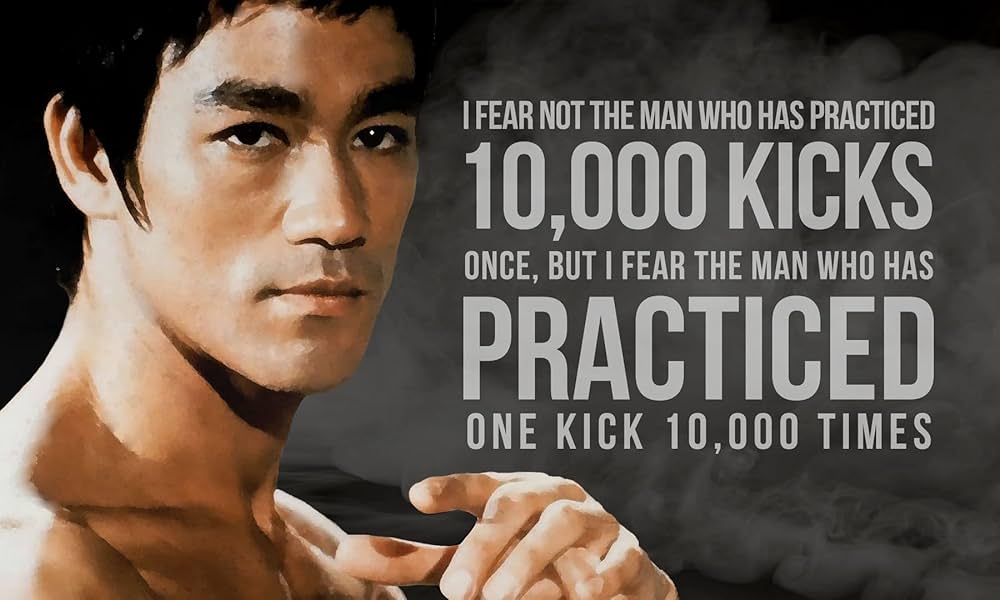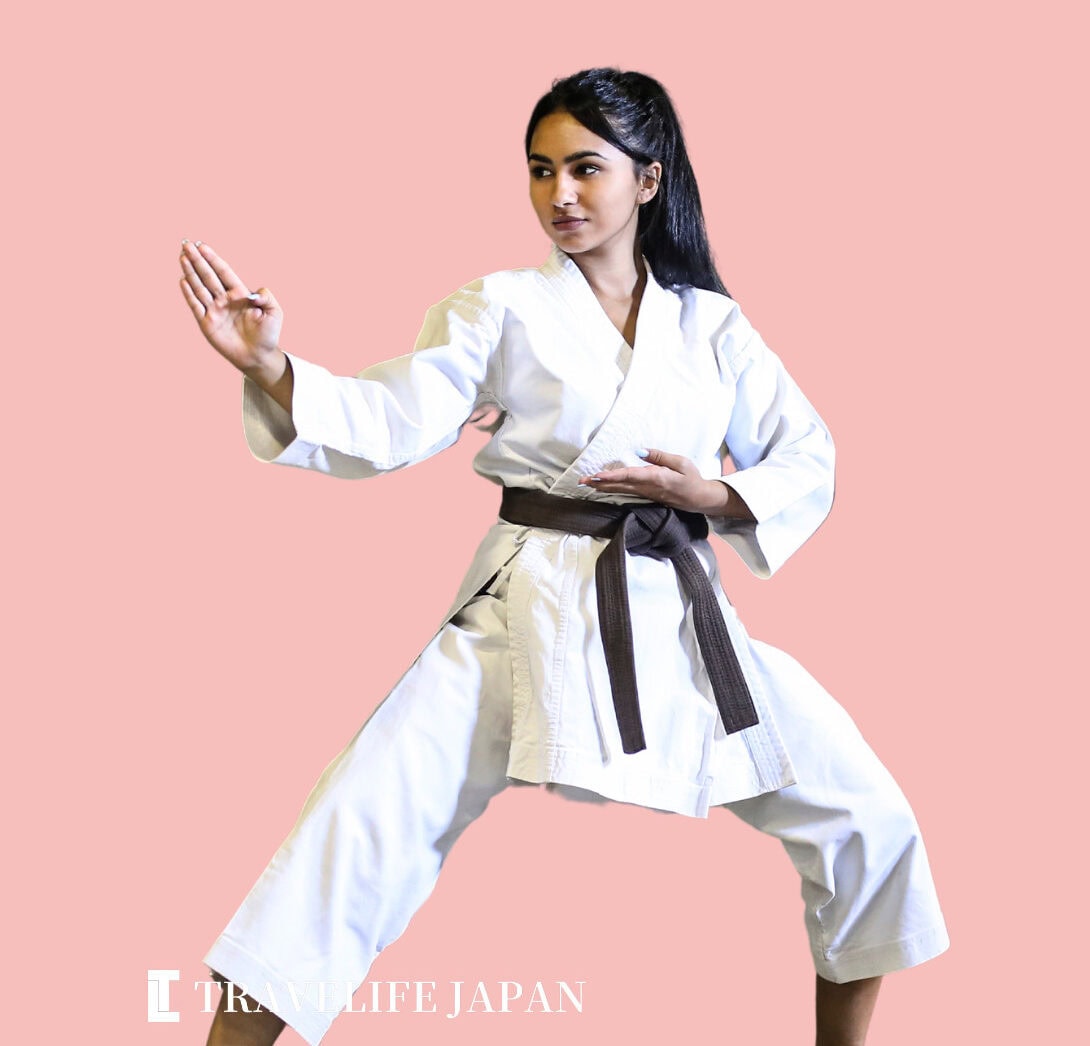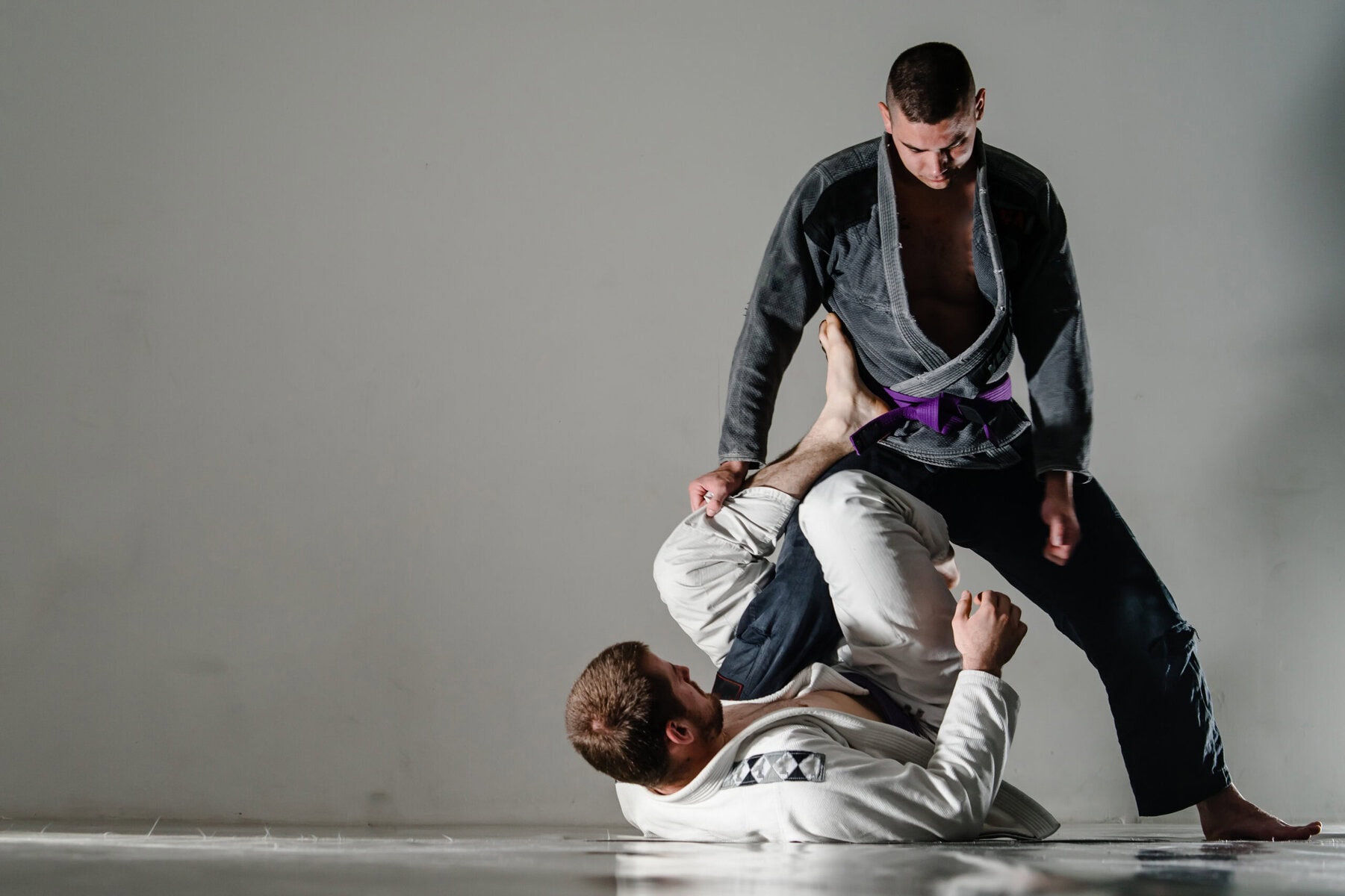Have you ever watched a martial arts demonstration and thought to yourself, "I could never do that"? Many people are intimidated by the flying kicks, complex techniques, and seemingly superhuman abilities displayed by advanced practitioners. But here's the truth that many don't realize: the easiest martial arts to learn aren't just for the naturally athletic or those who started training as children. In fact, there are several martial arts disciplines specifically designed to be accessible to beginners of all ages and fitness levels, with some even qualifying as the fastest martial art to learn for self-defense purposes.
As someone who began my martial arts journey four decades ago with Isshin Ryu Karate before exploring Aikido and other styles, I've seen firsthand how the right martial art can transform a complete novice into a confident practitioner in a surprisingly short time. The key isn't finding the most complex or flashy style – it's finding the right fit for your specific goals, body type, and learning preferences.
Whether you're looking for self-defense skills, a new fitness routine, or a practice that builds mental discipline, there's an accessible martial art waiting for you. Many people ask, "what is the easiest martial art to learn?" The answer depends on your personal goals and physical condition. In this guide, I'll walk you through the easiest martial arts to learn for beginners, helping you find the perfect starting point for your martial arts journey, including options for the easiest martial art to learn at home.
What Makes a Martial Art Easy to Learn?
Before diving into specific martial arts styles, it's important to understand what actually makes a martial art "easy" to learn. The easiest martial art to learn isn't necessarily the simplest or least effective – it's the one that aligns with your natural abilities, goals, and learning style.
Simple Techniques That Don't Require Years of Training
The most beginner-friendly martial arts feature techniques that produce results quickly. While mastery might take years, you should be able to execute basic moves effectively within weeks or months of consistent practice. When looking for the quickest martial art to learn, focus on styles that emphasize a smaller set of high-percentage techniques rather than an extensive arsenal of moves. These basic martial arts types offer the most direct path to functional skills.
Minimal Physical Conditioning Needed to Start
While all martial arts will eventually improve your fitness, some require significant strength or flexibility just to begin training. The most accessible styles allow you to start where you are physically and gradually build conditioning through practice. These arts emphasize proper technique over raw athletic ability, making them ideal for beginners of various fitness levels.
Focus on Practical Self-Defense, Not Complex Moves
Martial arts with a self-defense focus often teach the most straightforward and practical techniques first. Rather than emphasizing flashy movements that look impressive but have limited real-world application, these styles prioritize effective responses to common threats. This practical approach not only makes learning easier but provides usable skills from the very beginning.
I've found that students become discouraged when they can't see how their training connects to real-world applications. The easiest martial arts to learn bridge this gap by showing clear connections between training and practical use.
Can Be Learned at Home or With Minimal Equipment
While training with qualified instructors is always preferable, some martial arts can be practiced effectively at home with minimal equipment. For those seeking the easiest martial art to learn at home, look for styles with straightforward techniques that can be practiced solo. This accessibility makes it easier to maintain consistent practice, which is crucial for developing skills quickly. The easiest fighting style to learn at home typically focuses on fundamental movements that don't require partners or specialized equipment. Arts that don't require extensive gear or specialized training environments remove common barriers to entry.
Availability of Schools and Instructors
Finally, I MUST emphasize a martial art is easier to learn, and you will develop more proficient skills when quality instruction is readily available. The more popular and widespread a style is, the more likely you are to find reputable schools and experienced teachers near you. Accessible martial arts typically have standardized curricula and teaching methods, making the learning process more consistent and easier to follow.
Now that we understand what makes a martial art beginner-friendly, let's explore the seven easiest martial arts for newcomers to learn.
7 Easiest Martial Arts to Learn for Beginners
After decades of training and teaching martial arts, I've identified these seven styles as the most accessible for beginners. Each offers a unique approach and set of benefits while remaining approachable for newcomers.
Karate – Structured Techniques and Easy-to-Follow Basics
Karate originated in Okinawa, Japan, and has become one of the world's most popular martial arts for good reason. Its structured approach to teaching basic punches, kicks, and blocks makes it highly accessible to beginners. Most karate schools follow a well-established curriculum that gradually introduces techniques, allowing students to build skills progressively.
Gichin Funakoshi, often called the father of modern karate, wisely noted, "Karate begins and ends with respect." This philosophy underscores why karate is excellent for beginners – it emphasizes discipline and proper form from day one, creating a solid foundation for all martial arts training.
The belt ranking system in karate provides clear goals and measurable progress, which can be highly motivating for newcomers. Techniques are practiced through forms (kata), partner drills, and gradually introduced sparring, allowing students to develop at their own pace. Perhaps most importantly, basic karate moves can be effective after just a few months of consistent training.
Taekwondo – Straightforward Kicking Techniques with Clear Progression
Taekwondo, Korea's national martial art, has gained immense popularity worldwide, particularly among beginners seeking an accessible entry point into martial arts. With more practitioners than any other martial art globally and recognition as an Olympic sport, Taekwondo offers beginners a structured learning environment with clear advancement criteria.
While Taekwondo is famous for its dynamic kicking techniques, beginners start with fundamental stances and basic kicks that build upon natural movements. The systematic curriculum progresses logically, introducing more complex techniques only after mastering the basics. This methodical approach prevents beginners from feeling overwhelmed.
For parents considering martial arts for their children, Taekwondo classes often excel at balancing discipline with fun, making it an excellent choice for young beginners. Many schools incorporate games and activities that develop coordination while teaching fundamental techniques.
Boxing – Simple, Effective Self-Defense with Focus on Punches
Boxing stands out among martial arts for its streamlined focus and straightforward techniques. While mastering boxing takes years, the basic punches and defensive movements can be learned relatively quickly, making it one of the fastest martial art to learn for practical self-defense. Many instructors consider boxing among the easy martial arts to learn because of its focused curriculum and emphasis on fundamentals.
As George Foreman once observed, "Boxing is like jazz. The better it is, the less people appreciate it." This comparison highlights boxing's elegant simplicity – a small set of techniques refined to maximum effectiveness rather than an extensive repertoire of moves.
"Boxing is like jazz. The better it is, the less people appreciate it."
From a self-defense perspective, boxing is immediately practical. The focused training improves not only your ability to strike and defend but also enhances motor skills, fitness, endurance, and mental preparedness for confrontations. The conditioning aspects happen naturally through practice, gradually building your stamina and strength.
Boxing's accessibility also extends to equipment needs – while proper gloves and hand wraps are essential, beginners can start training with minimal investment compared to many other martial arts.
Muay Thai (Beginner Level) – Basic Strikes and Conditioning for Fitness
Known as "the art of eight limbs," Muay Thai utilizes punches, kicks, elbows, and knees to create a comprehensive striking system. While advanced Muay Thai involves complex techniques, the basic strikes are intuitive and can be picked up relatively quickly by beginners.
The beauty of Muay Thai lies in its simplicity – there are no complicated moves to memorize. Instead, practitioners learn to efficiently and effectively use their bodies as weapons. These fundamental movements follow natural body mechanics, making them easier to learn and apply.
Muay Thai training provides an exceptional full-body workout, making it ideal for those seeking fitness benefits alongside martial skills. The cardiovascular conditioning happens organically through practice, gradually building endurance while learning practical techniques.
Most Muay Thai schools introduce techniques progressively, starting with basic punches and kicks before moving to clinch work and more advanced strategies. This gradual approach allows beginners to build confidence before tackling more challenging aspects of the art.
Krav Maga – Easy-to-Learn Self-Defense Techniques for Real-Life Situations
Krav Maga, developed for the Israeli military, stands apart from traditional martial arts in its singular focus on practical self-defense. Unlike traditional martial arts, Krav Maga is designed to be learned quickly and applied efficiently, focusing on real-world situations rather than stylized techniques.
The system prioritizes instinctive movements and practical techniques aimed at neutralizing threats rapidly. Training typically begins with responses to common attacks and gradually progresses to more complex scenarios, always maintaining the focus on real-world applicability.
For those whose main goal is beginning a martial arts practice for self-defense, Krav Maga could be the best choice. It teaches real-world self-defense strategies that can be applied in actual threatening situations, not just in controlled training environments.
What makes Krav Maga particularly accessible for beginners is its basis in natural movements and responses. Rather than requiring you to reprogram your instincts completely, Krav Maga training refines and directs your natural reactions to maximize their effectiveness.
Judo – Focus on Throws and Balance Rather Than Striking
Judo, meaning "the gentle way," was developed in Japan in the late 19th century. Despite its emphasis on throws and takedowns, many beginners find Judo surprisingly accessible due to its systematic teaching method and focus on using leverage rather than strength.
In Judo, there is an emphasis on using your opponent's momentum against them, which makes it a great option for fitness beginners. This principle means that even smaller practitioners can learn to effectively control larger opponents through proper technique.
The progressive nature of Judo training is ideal for beginners. Students start with learning how to fall safely (ukemi), which builds confidence and prevents injuries. Only after mastering these basics do students move on to throws and ground techniques, ensuring a solid foundation before attempting more advanced moves.
Judo's structured ranking system provides clear milestones for progress, helping beginners stay motivated through visible advancement. The competitive aspect can be introduced gradually, allowing students to apply techniques in controlled scenarios as their skills develop.
Brazilian Jiu-Jitsu (BJJ, Beginner Level) – Ground-Based Self-Defense That Doesn't Rely on Strength
Brazilian Jiu-Jitsu has exploded in popularity in recent decades, largely due to its effectiveness in mixed martial arts competitions. While mastering BJJ takes years of dedicated practice, the fundamental concepts are accessible to beginners, especially those interested in ground-based self-defense.
BJJ has seen a steep rise to fame in recent decades, and for good reason. Its systematic approach to teaching ground fighting makes it approachable for newcomers, despite its technical depth. The art focuses on controlling an opponent through leverage and position rather than strikes, making it safer to practice at full intensity.
What makes BJJ particularly beginner-friendly is its emphasis on technique over strength or athleticism. Smaller practitioners can effectively control larger opponents by applying proper leverage and position, making it accessible to people of all body types and fitness levels.
Most BJJ schools, including those associated with the IBJJF, introduce techniques progressively, starting with fundamental positions and basic escapes before moving to more complex submissions. This methodical approach allows beginners to develop a solid foundation while seeing consistent improvement in their abilities.
Best Martial Arts for Different Goals
The "easiest" martial art for you personally depends largely on your specific goals. Based on my experience training and teaching various styles, here are my recommendations for different objectives:
For Self-Defense → Krav Maga, Boxing, BJJ
If your primary goal is self-defense, consider Krav Maga, Boxing, or Brazilian Jiu-Jitsu. Krav Maga excels in teaching practical responses to common threats, including defense against weapons. There are no rules or points in Krav Maga – you can use whatever means necessary to defend yourself against an attacker.
Boxing provides highly effective striking skills and the cardio conditioning to maintain intensity during a confrontation. The focus on a few well-refined techniques means you can develop usable skills relatively quickly.
BJJ offers solutions for scenarios where you end up on the ground – a common occurrence in real confrontations. The control-based approach allows you to manage an attacker without necessarily causing serious harm, giving you options for various situations.
In my four decades of martial arts experience, I've found that the best self-defense training combines elements from multiple systems. However, starting with one of these three provides a solid foundation that you can build upon.
For Fitness → Muay Thai, Taekwondo, Karate
Martial arts training can provide an exceptional full-body workout while teaching valuable skills. For maximum fitness benefits, consider Muay Thai, Taekwondo, or Karate.
Muay Thai training is particularly intensive, incorporating striking techniques with all limbs alongside clinch work. The typical training session includes pad work, bag drills, and conditioning exercises that build cardiovascular endurance and muscular strength simultaneously.
Taekwondo's emphasis on dynamic kicking techniques develops exceptional lower body strength and flexibility. The continuous movement during forms practice and sparring provides effective cardiovascular training while improving balance and coordination.
Karate training varies by style, but most schools incorporate a mix of technique practice, forms, and partner drills that provide a comprehensive workout. The emphasis on proper form and precise movement builds body awareness and control alongside physical conditioning.
For Mental Focus & Discipline → Karate, Judo
Martial arts training can be transformative for developing mental focus, self-discipline, and emotional regulation. For these benefits, traditional styles like Karate and Judo are particularly effective.
Karate training teaches that "real strength is facing oneself strictly with severe eyes. This is the first condition of martial arts training," as noted by Tsutomu Ohshima, Master of Shotokan Karate. This internal focus develops mental discipline that extends far beyond the dojo.
Judo's systematic progression and emphasis on technical precision requires consistent mental focus. The immediate feedback provided when techniques succeed or fail develops persistence and problem-solving skills that benefit all areas of life.
Both styles incorporate traditional elements like formal etiquette, meditation, and philosophical teachings that foster self-awareness and emotional control. These traditional aspects may seem ceremonial, but they play a crucial role in developing the mental benefits that many practitioners value most.
For Seniors & Low-Impact Training → Tai Chi, Aikido
Age should never be a barrier to martial arts training, but seniors and those requiring lower-impact options have specific needs. Tai Chi and Aikido provide excellent options for these practitioners.
Tai Chi emphasizes slow, flowing movements that improve balance, flexibility, and body awareness without jarring impact. The meditative aspects reduce stress while the continuous movement provides gentle cardiovascular benefits. Many practitioners continue well into their senior years, often reporting improved mobility and reduced pain.
During my years training in Aikido under esteemed instructors like Shihan Yoshimitsu Yamada, Shihan Donovan Waite, and Jason Perna Shoidin, I observed how the art's focus on blending with an attacker's energy rather than meeting force with force makes it accessible to practitioners of all ages. The circular movements develop coordination and body awareness while minimizing impact on joints.
Both arts can be practiced at varying intensities, allowing practitioners to adjust their training to accommodate physical limitations while still developing valuable skills and enjoying the benefits of martial arts practice.
How to Choose the Right Martial Art for You
With so many options available, choosing the right martial art can feel overwhelming. Whether you're searching for the easiest fighting style to learn or just exploring basic martial arts types for beginners, finding the right fit matters. Here's my advice after decades in various martial arts communities:
Consider Your Goals
Begin by clarifying exactly what you hope to gain from martial arts training. Are you primarily interested in self-defense, physical fitness, competitive sport, mental discipline, or cultural traditions? Different martial arts emphasize different aspects, so identifying your priorities will narrow your options considerably.
Be honest with yourself about your objectives. If practical self-defense is your primary goal, styles like Krav Maga or Boxing might serve you better than arts with a stronger traditional or spiritual component. Conversely, if you're seeking a holistic practice that incorporates philosophy and meditation, traditional Japanese or Chinese martial arts might be more fulfilling.
Assess Your Physical Condition and Preferences
Your current physical condition and natural tendencies should inform your choice of martial art. If you have limited flexibility, styles like Taekwondo that emphasize high kicks might present a steeper learning curve. If you have joint issues, ground-fighting systems like BJJ might be challenging initially.
Consider your natural movement patterns and preferences. Are you more comfortable with striking or grappling? Do you prefer direct, linear movements or circular, flowing techniques? Choosing a style that aligns with your natural tendencies can accelerate your initial progress and increase your enjoyment of training.
I've seen many students struggle unnecessarily because they chose a style that conflicted with their natural movement preferences or physical limitations. The "easiest" martial art for you is often the one that works with your body rather than against it.
Try a Free Class or Trial Session Before Committing
Nothing can replace first-hand experience. Most reputable schools offer free trial classes or affordable introductory packages that allow you to experience their teaching style and environment before making a longer commitment.
During trial classes, pay attention to the teaching methodology, class atmosphere, and how comfortable you feel with the movements being taught. A good instructor will modify techniques for beginners and create a supportive learning environment. Trust your instincts – if something feels off or unnecessarily difficult, explore other options.
I encourage prospective students to try at least three different styles before making a decision. The contrast between different approaches often clarifies which style resonates most with your goals and learning preferences. Most schools have Groupon specials which allow for a cost effective way to assess many schools if they do not offer a free trial class.
Plan Your Budget Accordingly
Martial arts training involves various costs, including monthly tuition, uniform fees, equipment, testing fees, and possibly tournament or seminar expenses. Schools in the same area teaching different styles often have comparable base tuition, but the additional costs can vary significantly.
Some styles require minimal equipment (perhaps just a uniform), while others might necessitate protective gear, weapons, or specialized training tools. Factor these ongoing expenses into your decision, especially if budget constraints are a concern.
Remember that the least expensive option isn't always the best value. Quality instruction is worth investing in, particularly for beginners who are establishing fundamental habits and techniques that will shape their entire martial arts journey.
Final Thoughts on the Easiest Martial Arts to Learn
After four decades in the martial arts, beginning with Isshin Ryu Karate as a teenager and exploring various styles including Aikido, striking arts, and Brazilian Jiu-Jitsu, I've come to appreciate that the journey is highly personal. The "easiest" martial art isn't universal – it's the one that aligns with your goals, physical capabilities, and learning style.
As Chuck Norris wisely noted, "Whatever luck I had, I made. I was never a natural athlete, but I paid my dues in sweat and concentration and took the time necessary to learn karate and become world champion." His words remind us that persistence matters more than natural talent in martial arts progress.
If you're hesitating to begin because you're concerned about difficulty or fear you're not athletic enough, remember that every martial artist – even the most accomplished – began as a novice. The structured progression of most martial arts means you'll start with fundamentals appropriate to your level and advance gradually as your skills develop.
The most important step is simply to begin. Visit local schools, attend trial classes, and find an environment where you feel comfortable learning. The right instructor can make even challenging techniques accessible, while the wrong teaching approach can make simple movements feel impossible.
Ultimately, the easiest martial art to learn is the one you're excited to practice consistently. While many search for the quickest martial art to learn or the easiest martial art to learn at home, the truth is that passion and persistence will carry you further than any inherent advantages of one style over another. Whether you choose Karate, Boxing, Krav Maga, or any other style discussed in this guide, your commitment to regular practice will determine your success more than any other factor.
So take that first step. Your martial arts journey awaits, and the benefits – improved fitness, practical skills, mental discipline, and increased confidence – will more than reward your efforts.
What has been your experience with martial arts training? Are you considering starting a martial art, or have you already begun your journey? Share your thoughts and questions in the comments below!





